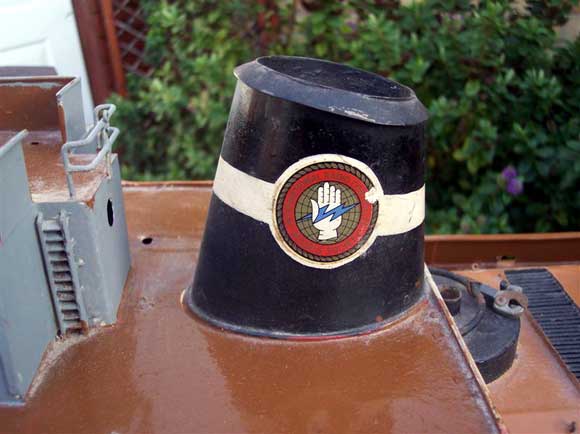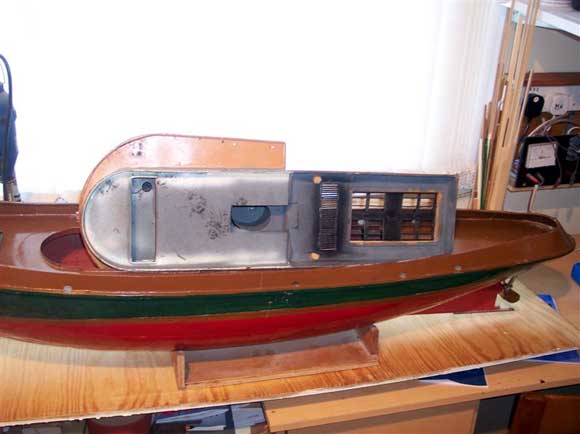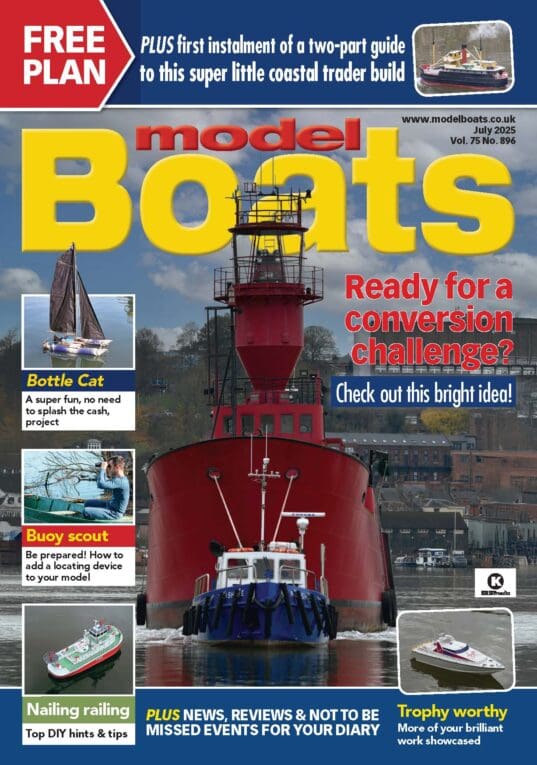


Pic 1: The tin tug well on the way to being restored.
I became interested in model boats in the late 1950s after building what was then an almost compulsory KeilKraft Ezebuild balsa model. It was then I joined the Hull Model Boat Club as a junior and my horizons became much wider, as I was given a 3ft long gum paper strip hull to play around with. The chairman and founder member was Pop Hobson, a boilermaker by trade, who came to me and asked if I fancied making a tug with him, and an answer in the affirmative was of course the immediate reply.
I was given the job of collecting the raw materials (Cow and Gate Baby Milk tins). This was easy as I was the eldest of seven boys. Pop made the wooden frames and the hull was built in the same way as a yacht, utilising a monocoque shell which lifted off the shadows (frames) when completed.
Enjoy more Model Boats Magazine reading in the monthly magazine.
Click here to subscribe & save.
The original intention was steam power, and Pop was in the process of building the engine when he was taken ill and sadly died. So, my younger brother and I were left to sort this boat out and as neither of us knew anything about steam, we made an appeal to the other club members and we became the proud owners of a 27v ac Delco Bomb Sight motor, ex-Lancaster bomber!
This was installed, together with a pair of motorcycle batteries in parallel, and without the aid of radio control off it went very slowly across the pond – what a disappointment. We were then treated to a lesson in connecting power supplies by a fellow club member. 12 volts were put through the motor which progressed things a little, but you know how it is when you see an improvement? You want to see how far you can push the boundaries. So, yes four motorcycle batteries (24 volts) was more like it, the only drawback being that nobody wanted to stop it!
The club changed its name shortly after that and became the IRCMS Hull Branch (Dave Wiggins has covered some history of this society in his Collectors’ Corner series) and we went on to the inevitable Aerokits Crash Tenders/Sea Commanders etc. with home built radios, and the tug was stored away in the hull clubhouse and forgotten.




Pic 4:The Taycol Supermarine motor. Pic 5: The funnel with its IRCMS badge. Pic 6: Underside of the superstructure. Pic 7: The hull interior.
I then went off motorcycle racing, got married and the boats were still in the loft and then steering events seemed like a good idea (after getting some new glasses). Some years later the club ran the MPBA National Scale Final and shock horror – what is part of the navigation course, but the tin tug half filled with sand and part submerged as a marker!
After that event we all went different ways again, and once more the poor tug was abandoned and it was only in the run up to the reformation of the club, that we were asked by the council if we would clear all our course stuff etc. out of the clubhouse, so that the council could do what the air raids had failed to achieve, namely to demolish it.
Thus I became re-united with my old tug, forty years and more later, and now the Hull Model Boat Club is running a classic electric section for the older boats. So she will at last take to the water again. The bomb sight motor was completely corroded and has been removed, but a very kind club member has donated a Taycol Supermarine Special motor from the late 1950s to power her. Although she carries the IRCMS badge on her funnel she has never sailed under radio control. This is a bit ironic, but is about to be rectified soon. The tug will be named ‘Pop Hobson’ and will become the oldest radio boat on the pond and like her owner, she is a bit of a late starter.




